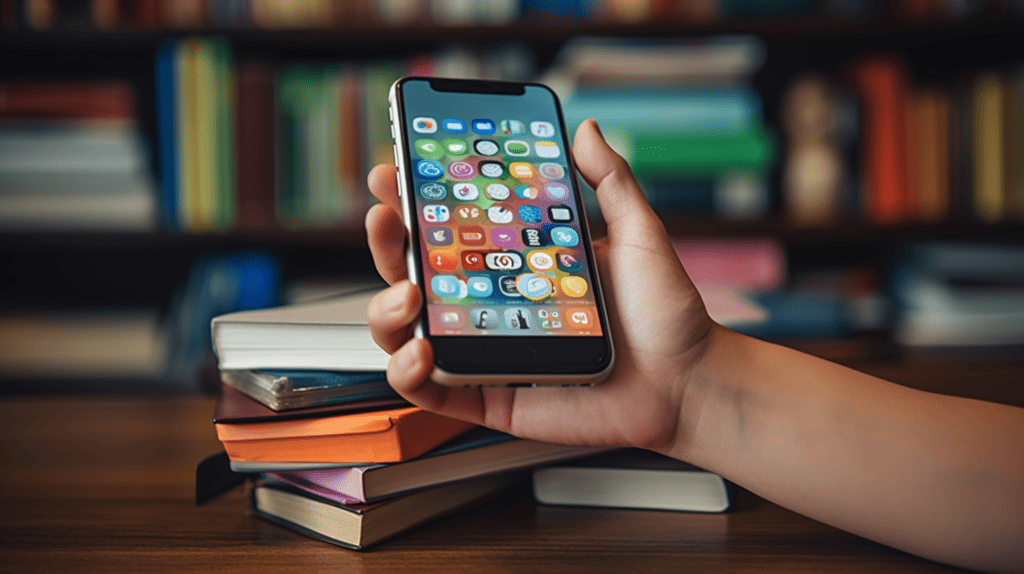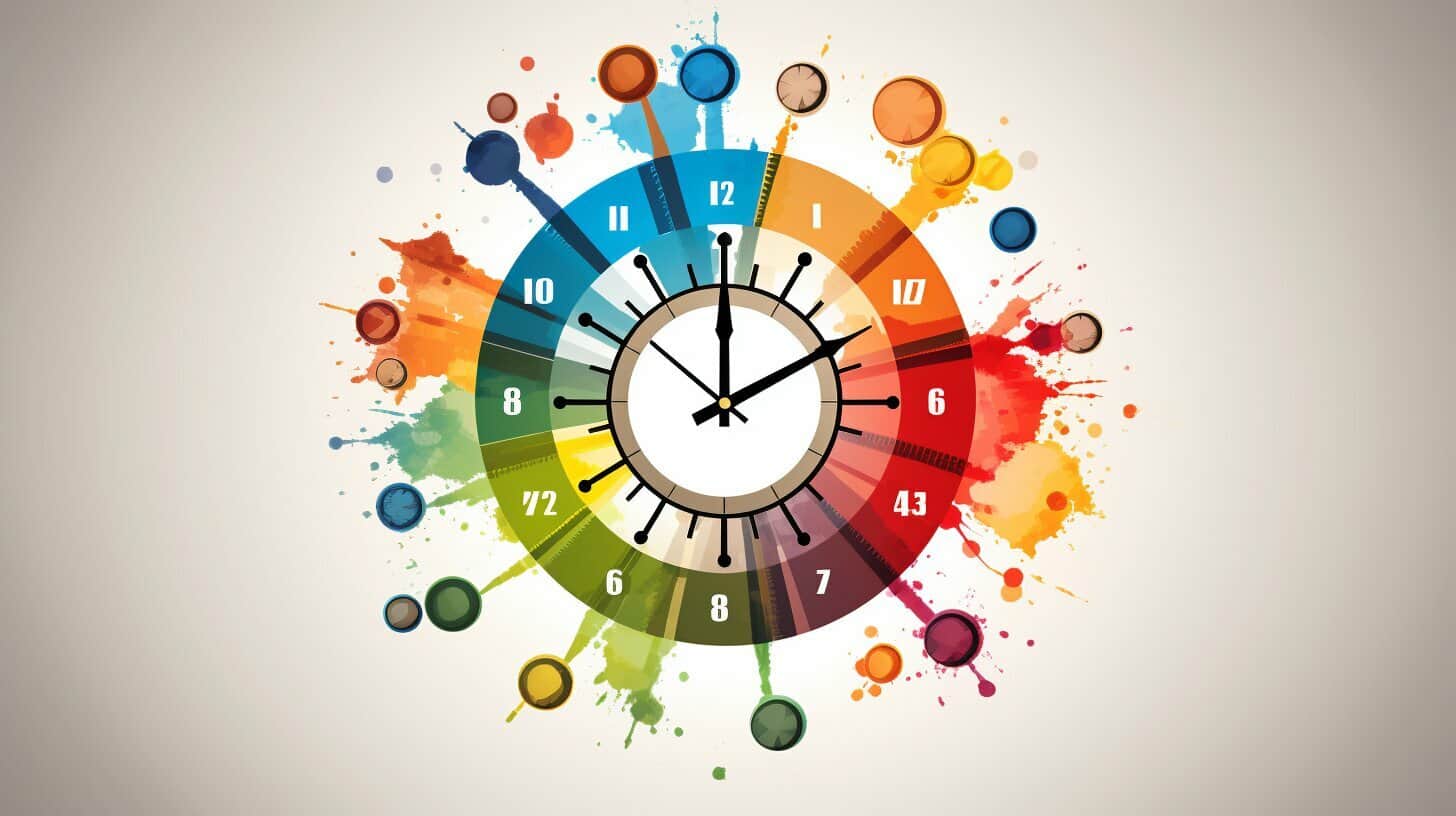Time is a precious resource that we can never get back once it’s gone. As someone who values productivity and efficiency, I understand the importance of making the most out of every minute. That’s why I have compiled a list of time-efficient tactics that can help you achieve success faster and make the most out of your day.
In the following sections, I will discuss the benefits of prioritizing tasks, how to streamline your workflow with time-saving tips, the importance of utilizing time management tools, and much more.
Key Takeaways:
Prioritize Tasks to Optimize Time
As someone who is constantly looking for ways to be more productive, I’ve found that prioritizing tasks is one of the most effective time management strategies. By determining which tasks are most important and need to be done first, you can optimize your time and avoid wasting it on less critical tasks.
To prioritize tasks effectively, start by creating a list of everything you need to accomplish. Then, evaluate each task based on its level of importance and urgency. Prioritize those that are both important and urgent, and schedule time in your calendar to complete them. For tasks that are important but not urgent, designate a specific time in your calendar to work on them. And for tasks that are neither important nor urgent, consider whether they are worth doing at all.
Another helpful tip for optimizing time is to break larger tasks into smaller, more manageable ones. This can help you tackle the most important parts first and make steady progress toward completing the task as a whole.
Prioritization Tips:
- Assess tasks based on importance and urgency
- Schedule time in your calendar for high-priority tasks
- Break large tasks into smaller, manageable chunks
By prioritizing tasks, you can ensure that you are making the most of your time and focusing on the tasks that matter most. This can help you achieve your goals more quickly and efficiently.

Streamline Your Workflow with Time-Saving Tips
As a copywriting journalist, I understand the importance of maximizing productivity during work hours. Implementing time-saving tips can help streamline your workflow, allowing you to finish tasks quicker and achieve success faster.
One of the most effective time-saving techniques is automation. Automated tools and software can perform repetitive tasks, such as sending out emails or scheduling social media posts, freeing up your time to focus on more important tasks. Additionally, delegating tasks to team members or outsourcing certain responsibilities can also be a time-saving strategy.
Effective communication can also save time. Clear communication with colleagues or clients can help prevent misunderstandings and reduce time spent on back-and-forth messages or emails. Utilizing project management tools, such as Trello or Asana, can also help keep everyone on the same page and increase productivity.
Another time-saving technique is to batch similar tasks together. This involves grouping similar tasks, such as responding to emails or phone calls, together in a certain time block to increase efficiency and minimize distractions. This method can help reduce the time spent shifting between different tasks and keep you focused.
Finally, taking regular breaks can actually improve productivity. Studies have shown that taking short breaks every 90 minutes can increase focus and energy levels. So, take a few minutes to stretch, go for a quick walk, or simply step away from your workspace to recharge and come back refreshed.
Utilize Time Management Tools for Enhanced Efficiency
In today’s fast-paced world, it’s essential to maximize our time to achieve success faster. While there are many time management strategies that we can adapt, utilizing time management tools can enhance our efficiency to a great extent. As a professional journalist, I use various tools to manage my time effectively and optimize my productivity.
There are different types of time management tools available, including task management apps, time-tracking software, and scheduling tools. Choosing the right tool depends on your specific needs and preferences. Below are some of the popular time management tools that I recommend:
| Tool | Description |
|---|---|
| Trello | A task management app that allows you to create boards, lists, and cards to organize your tasks efficiently. |
| Asana | A project management tool that enables teams to assign tasks, track progress, and collaborate effectively. |
| RescueTime | A time-tracking software that helps you understand how you spend your time and identify areas for improvement. |
| Google Calendar | A scheduling tool that allows you to manage your time, set reminders, and schedule meetings and appointments. |
Using these tools can help you prioritize tasks, reduce distractions, and stay focused on your goals. However, it’s essential to use them wisely and avoid becoming too reliant on technology. Remember that these tools are meant to enhance your efficiency, not replace your decision-making skills.
In conclusion, using time management tools can be an effective way to optimize your productivity and achieve success faster. As a journalist, I have found that incorporating some of these tools into my daily routine has helped me streamline my workflow and reduce stress. Whether you’re a professional or a student looking to improve your time management skills, these tools can provide the support you need to stay organized and efficient.

Harness the Power of Time Blocking
Time blocking is a time management technique that involves breaking up your day into specific time blocks allotted for specific tasks or activities. By setting aside designated times to focus on a particular task, you can eliminate distractions and increase productivity.
To implement time blocking in your routine, start by identifying your most important tasks and assigning them a specific time block. Be sure to also schedule in breaks and allow for flexibility in case unexpected tasks or interruptions arise.
You can use a planner or digital calendar to help with time blocking, and color-coding different activities can also be helpful in keeping track of your schedule at a glance.
Remember, time blocking is not about micromanaging every minute of your day, but rather about being intentional and strategic with your time to achieve your goals and maximize productivity.
Avoid Time-Wasting Activities
As I mentioned earlier, time is a precious commodity that we must learn to use wisely. Unfortunately, there are numerous activities that can eat up our time without adding any real value to our lives. It’s important to identify these time-wasters and minimize or eliminate them altogether to optimize our time.
One of the biggest culprits of time-wasting is social media. While it’s a great way to stay connected with friends and family, it’s easy to get sucked into mindless scrolling and lose track of time. To avoid this, try setting a limit on the amount of time you spend on social media each day. You can also use apps that track your usage and remind you when you’ve reached your limit.
Another time-waster is multitasking. While it may seem like you’re getting more done by doing several things at once, studies have shown that multitasking actually decreases productivity and increases the likelihood of making mistakes. Instead, focus on one task at a time and give it your full attention.
Procrastination is also a common time-waster. Putting off tasks until the last minute not only leads to added stress, but it also decreases the quality of our work. To combat procrastination, break tasks down into smaller, more manageable chunks and set realistic deadlines for each one.
Lastly, saying yes to every request or invitation can also be a time-waster. It’s important to learn to say no to things that don’t align with our values or goals, or that we simply don’t have time for. By doing so, we free up our time for the things that matter most.

Create a Productive Workspace
As someone who has spent a lot of time working remotely, I know how important it is to have a well-organized and productive workspace. A cluttered and disorganized workspace can be a major hindrance to productivity and can lead to wasted time and unnecessary stress.
One of the first things I do when setting up my workspace is to declutter and get rid of any unnecessary items. A clean and organized workspace can help clear the mind and create a more focused environment.
Next, I like to optimize my workspace to fit my specific needs. This might include investing in a comfortable chair and desk, or adding additional shelving or storage to keep things organized and within reach.
| Tips for Creating a Productive Workspace |
|---|
| Declutter and get rid of unnecessary items |
| Invest in a comfortable chair and desk |
| Add additional shelving or storage to keep things organized |
I also find that it’s important to create a space that inspires creativity and focus. This might include adding plants, artwork, or other personal touches that bring joy and positivity to the workspace.
Finally, I make sure that my workspace is free from distractions. This might mean closing the door or using noise-cancelling headphones to block out any outside noise. By eliminating distractions, it’s easier to stay focused and get work done efficiently.
By creating a well-organized and productive workspace, you can optimize your time and keep your focus where it needs to be. With a few simple adjustments, you can transform any space into a hub of productivity and success.

Foster Positive Habits for Time Efficiency
Creating positive habits is essential to achieving success faster. By incorporating these habits into your daily routine, you can optimize your time and increase productivity. Here are some habits that have helped me:
- Starting the day with a plan: I like to begin my day by setting clear goals and prioritizing tasks. This helps me stay focused and manage my time effectively.
- Taking breaks: Breaks are essential to maintaining focus and preventing burnout. I like to take short breaks throughout the day to recharge and come back to tasks feeling refreshed.
- Minimizing distractions: Distractions can be a major time-waster. I like to turn off notifications on my phone and avoid social media during work hours to stay focused.
- Utilizing downtime: I try to make the most of downtime by using it to complete small tasks, like responding to emails or making phone calls.
- Tracking progress: Tracking progress can help you stay motivated and identify areas for improvement. I like to keep track of my daily tasks and accomplishments to stay on track.
Remember, creating positive habits takes time and effort. Start small and gradually incorporate these habits into your daily routine. With consistency and perseverance, you can cultivate a more time-efficient and productive lifestyle.
Conclusion on Time-Efficient
Time is our most valuable resource, and by implementing these time-efficient strategies, we can achieve success faster and make the most out of every minute. Prioritizing tasks, streamlining workflows, utilizing time management tools, time-blocking, avoiding time-wasting activities, creating a productive workspace, and fostering positive habits are all essential components of time efficiency.
As I wrap up this article, I encourage you to start implementing these strategies in your personal and professional life. Remember, small changes can lead to big results, so don’t be afraid to try something new. By optimizing your time, you can achieve your goals and live a fulfilling life.
Take Action:
Choose one or two time-efficient strategies to implement in your daily routine this week. Track your progress and reflect on how it has impacted your productivity and overall well-being. Share your experience with me in the comments below!
FAQ on Time-Efficient
Q: What are some time-efficient strategies for achieving success faster?
A: Time-efficient strategies for achieving success faster include prioritizing tasks, streamlining your workflow, utilizing time management tools, harnessing the power of time blocking, avoiding time-wasting activities, creating a productive workspace, and fostering positive habits.
Q: How do I prioritize tasks to optimize time?
A: Prioritizing tasks involves determining which tasks are most important and need to be completed first. You can use techniques such as the Eisenhower Matrix or the ABC method to effectively prioritize tasks based on their urgency and importance.
Q: What are some time-saving tips to streamline my workflow?
A: To streamline your workflow and save time, you can try automation tools, delegate tasks to others when possible, and improve communication and collaboration with your team. You can also establish efficient work practices, such as reducing distractions and setting specific goals for each task.
Q: How can I utilize time management tools for enhanced efficiency?
A: Time management tools can help you better manage your time by providing features such as task lists, reminders, calendar integration, and productivity tracking. Popular time management tools include Trello, Asana, and Todoist.
Q: What is time blocking and how can I use it to manage my time effectively?
A: Time blocking is a time management technique where you allocate specific blocks of time for different tasks or activities. To use time blocking effectively, you can create a schedule, prioritize tasks within each block, and set boundaries to minimize interruptions and distractions.
Q: How can I avoid time-wasting activities?
A: To avoid time-wasting activities, it’s important to identify what activities are consuming your time without adding value or contributing to your goals. Minimize distractions, set boundaries with time-consuming activities like social media or unnecessary meetings, and consciously prioritize tasks that align with your objectives.
Q: How can I create a productive workspace?
A: To create a productive workspace, declutter your physical and digital environment, organize your materials and tools in a way that is easily accessible, and optimize your workspace ergonomically. Minimizing distractions and personalizing your space to suit your preferences can also contribute to a productive work environment.
Q: What positive habits can I adopt for time efficiency?
A: Positive habits that can enhance time efficiency include setting clear goals, planning ahead, practicing effective communication, practicing self-discipline, taking regular breaks, and continuously learning and improving your skills. These habits can help you stay focused, organized, and motivated.





Leave a Reply